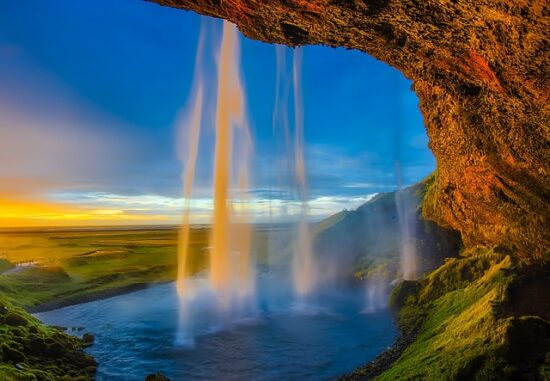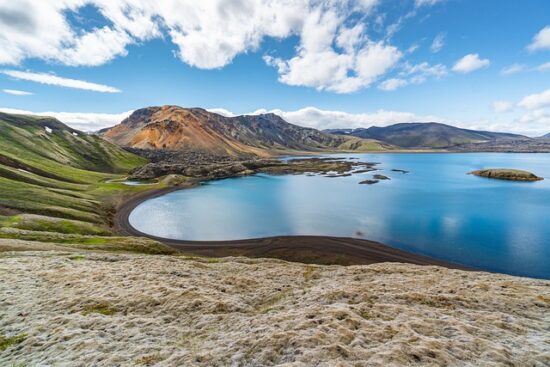Located between the Arctic ocean and the North Atlantic ocean, Iceland is essentially a Nordic island country. Nordic are those countries of North Atlantic and Northern Europe that are geographically and culturally linked to each other. Apart from Iceland, the other two Nordic countries are Finland and Scandinavia. The population of this country is spread out over a large area which makes it the only country of Europe where people are sparsely populated. It has an extremely rich and diverse cultural heritage which began in about 12th century. The wood carving, silversmithing and weaving of Iceland are some of the arts that are practiced here for centuries. The literacy rates of this country are one of the highest in the world. Now let’s explore more in Iceland facts for kids!
A Quick Guide to Iceland Facts for Kids
Capital city: Reykjavík
Official Language: Icelandic
Traditional cuisine: Þorramatur
Local delicacy: Puffin
Traditional Sport: Glíma
Fascinating Iceland Facts for Kids | Iceland History Facts
- Before Norsemen came to this island, it was inhabited by Scottish monks. These monks were known as Papar which means ‘Pope’. Norsemen are those people that came from the north.
- The two historical books of Iceland are Landnáma and Íslendingabók.
- Íslendingabók means ‘Book of Icelanders’ and it is about the history of Iceland. It was written in about 12th century.
- Landnáma means ‘Book of Settlements’ and it refers to the period when Norsemen arrived on this island. This was a period between 9th and 10th centuries. This book narrates how Norsemen came to know about this island and began settling there.
- The first person who came from Scandinavia and lived in Iceland was Garðar Svavarsson. However, he did not settle here for too long and headed off after staying for one winter only. In 870 A.D. he sailed around Iceland and discovered it.
- Húsavík became the first site of Iceland where a Norseman was settled. Garðar also constructed a house at this place.
- The first person who settled on this island permanently was Náttfari. He came here along with Garðar but when Garðar went away, he decided to stay with his two slaves. The place where he stayed is now known as Náttfaravík.
- The first permanent Nordic settlers of this island are Ingólfr Arnarson and his wife. He came here and constructed his homestead. In 874, he established Reykjavík and gave it its name. However, according to Ari Thorgilsson, Papar were already there when Norsemen arrived on this island.
- Today only one percent of this island is a wooded area. During 10th century, the forest existed on almost 25 percent of Iceland.
- In the 18th century, various natural disasters and diseases killed most of the people in Iceland. Almost a quarter of the people living on this island were disappeared due to smallpox and famine.
 Iceland Facts and Statistics | Iceland Geography Facts
Iceland Facts and Statistics | Iceland Geography Facts
- There are three national parks in Iceland.
- Out of hundreds of volcanoes in Iceland, thirty volcanoes are active.
- Iceland is composed of 30 small islands.
- The largest lake of Iceland is Þórisvatn. The reservoir is about 88 square kilometers and gets water from Þjórsá River. The river Þjórsá in turn takes water from Hofsjökull, a glacier.
- Located at the southwestern part of this island, Þingvallavatn lake is Iceland’s largest natural lake. It is a rift valley lake and has a surface area of 84 square kilometers. This lake is about 114 metres deep. It is named after Þingvellir.
- With the length of 143 miles (230 kilometers) and situated at southern Iceland, Þjórsá river is the longest river of this island.
- The deepest glacial lake of Iceland is Jökulsárlón. With a surface area of 18 square kilometers, this lake is about 248 metres (814 feet) deep.
 Interesting Iceland Statistics
Interesting Iceland Statistics
- The consumption rates of Coca-Cola in Iceland are one of the highest in the world.
- One of the world’s most famous destinations for travelers in Iceland is Þingvellir. In 930, the parliament of Iceland was established in this area and continued until 1798. In 1930 (1000th birthday), it was declared as the Þingvellir National Park.
- In Iceland, fishing contributes 40 percent to the earnings from exports.
- About 1,300 species of insects are present on this island.
- Iceland is home to just one indigenous land mammal i.e. Arctic Fox. It was the only mammal that was present before the arrivals of humans in Iceland. As for indigenous reptiles, Iceland has none.
5 Facts about Iceland
- Icelanders do not use species or herbs in their cuisines. The traditional cuisines of this island rely mainly on meats of lamb, mutton, fish and some dairy products.
- The tallest tree of this island is Kirkjubæjarklaustur. This tree is about 25 metres high and it was cultivated in 1949.
- About two-thirds (200,000) of the population of Iceland is clustered around the capital city and its suburbs.
- The national parliament of Iceland is Alþingi (in English: Althing) which was established in 930. Thus, Iceland became the oldest parliamentary democracy in the world.
- Almost 75 percent of Iceland lack vegetation.


Leave a Reply